15 Celtic symbols and meanings
Celtic symbols hold a special place in Irish culture, carrying deep meanings and conveying powerful messages. These ancient symbols have been part of Ireland’s history for centuries, and their significance has not diminished over time. From intricate knotwork to mythological creatures, each symbol tells a unique story about the country’s rich heritage.
One of the most well-known Celtic symbols is the triskelion, a triple spiral design that is often associated with the cycles of life, death, and rebirth. This symbol represents the interconnectedness between these phases, reminding individuals of the constant movement and evolution of life itself.

Another significant Celtic symbol is the Claddagh ring, a traditional Irish ring that features a heart, hands, and a crown. The heart symbolizes love, the hands symbolize friendship, and the crown represents loyalty. This iconic symbol not only represents fidelity within relationships, but also serves as a reminder of the importance of friendship and loyalty in every aspect of life.
Whether displayed in intricate artworks or worn as jewelry, Celtic symbols continue to captivate people worldwide. They serve as a connection to Ireland’s ancient past, reminding us of the wisdom and beauty that has been passed down through generations.

- 15 Celtic symbols and meanings
- Celtic Symbols and their meanings
- 15 Celtic symbols and meanings
- Celtic Art
- Celtic Cross
- Irish Harp
- The Dara Celtic Knot
- The Ailm
- Celtic symbol for love
- Triskele – Triquetra or Trinity knot symbol
- The Shamrock
- Claddagh
- The Irish flag
- St Brigid’s Cross
- Quaternary Celtic Knot
- The Green Man
- Leprechauns
- Celtic Motherhood Knot
- The Celtic Tree of Life symbol – Crann Bethadh
- Did the ancient Irish have tattoos?
- Tips for Irish Translation for tattoos
- 10 Irish Translation Tips
- The Irish Gaelic Alphabet
- Ogham Alphabet
- Ancient Celtic Symbols and meanings for Getting a Tattoo in Ireland
- What are the best tattoo studios in Ireland?
- Frequently asked Questions about Celtic symbols and meanings
Xyuandbeyond is reader-supported. When you buy through links on our site, we may earn an affiliate commission. You can read my privacy policy here.
Celtic Symbols and their meanings
Celtic symbols arrived in Ireland with the Celts who were not indigenous to Ireland but lived all over Northern Europe. The Celtics were tribal people but they did speak similar Celtic languages and had many symbols and rituals in common.
The Druids were the highest-ranking Celts. They were the spiritual and physical guides often dispensing law and keeping the peace as well as coordinating the spiritual aspects of each tribe. As the keepers of culture, the Druids often created and taught the Celtic symbolism for all aspects of life within the tribe.
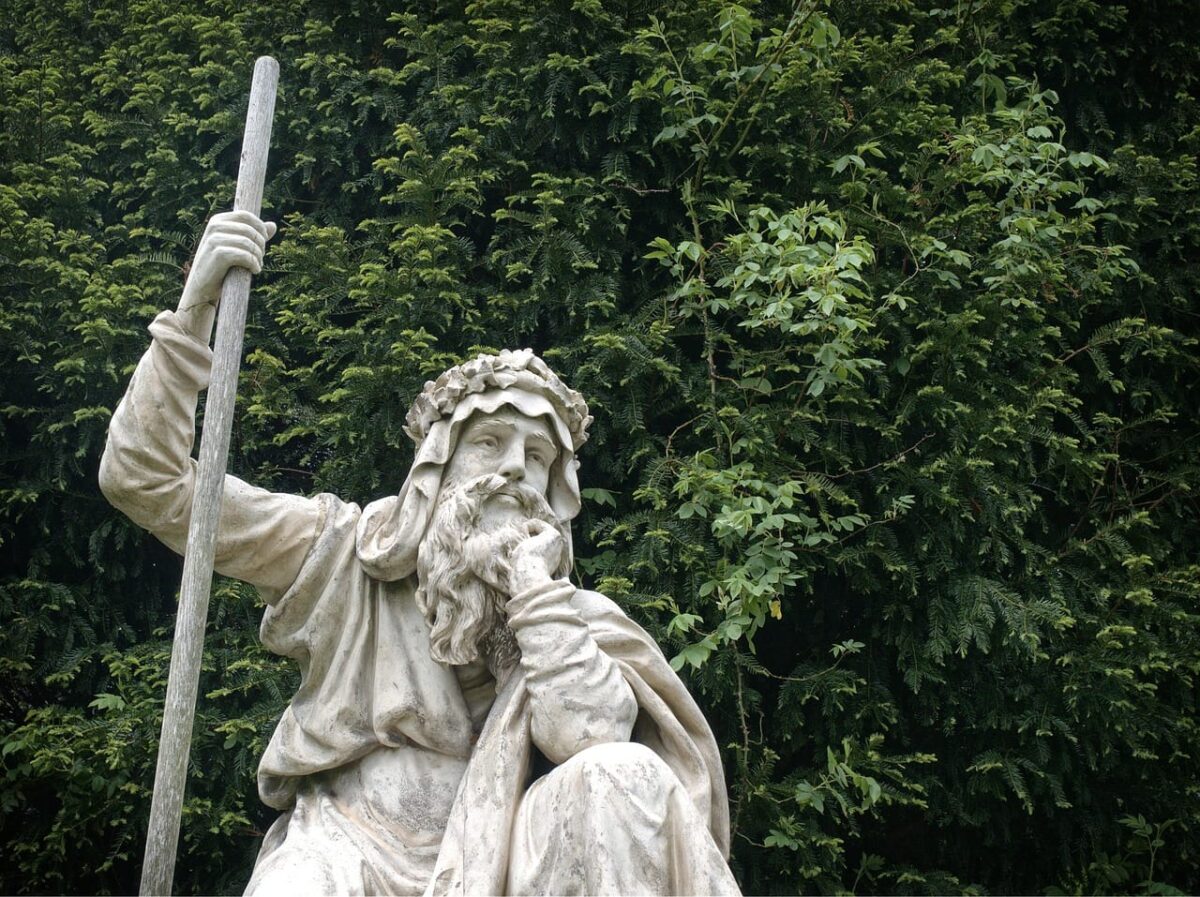
Many Irish Celtic symbols were never recorded in writing simply as symbols, which have had a myriad of interpretations. In many cases, they were co-opted by the Church leadership as a method of incorporating Christianity and paganism.
Celtic symbols often contain three intertwined parts, in the early Celtic culture these symbolized earth, sky and sea which also corresponded with the three stages of life past present and future and of course mind, body, and spirit.
When Christianity arrived on European shores the church began to incorporate the three to include the Holy Trinity: Father (God), Holy Ghost and Son (Jesus).

Celtic symbols hold great significance in the ancient culture of the Celts. These symbols were used by the ancient Celts to represent various aspects of their lives and beliefs. One popular Celtic symbol is the Celtic spiral, which represents the never-ending cycle of life and rebirth.
15 Celtic symbols and meanings
The Irish people, in particular, have a deep connection to Celtic symbols and often incorporate them into their artwork and designs. The intricate patterns of Celtic design can be seen in various forms such as jewelry, tattoos, and even clothing. Many of these symbols have pagan origins and were later adopted by the Celts. Celtic symbols have a rich history dating back thousands of years and the meaning behind Celtic symbols is often based on pagan beliefs.
These symbols offer a glimpse into the ancient culture and beliefs of the Celts, showcasing their reverence for nature, spirituality, and the interconnectedness of all things. Some other popular irish celtic symbols include the triskelion, representing the threefold nature of existence, the triquetra, symbolizing the unity of mind, body, and spirit, and the Celtic cross, which combines Christian and Celtic symbolism.
Each symbol has its own unique meaning and provides insight into the values and traditions of the ancient Celts. Today, Celtic symbols continue to captivate people around the world, and their meanings live on as a reminder of the rich and fascinating Celtic history.
It is important to bear in mind that the interpretations given to Celtic symbols were primarily established during the Celtic Revival in the mid-19th century. Many of the meanings attributed to these symbols were not rooted in ancient Celtic beliefs but rather emerged during this cultural movement. Therefore, it is crucial to approach the study of Celtic symbolism with an understanding of its historical context and the influence of the Celtic Revival on these interpretations.
Celtic Art
Celtic art is a distinctive form of artwork that emerged during the Iron Age in Europe. It was characterized by intricate designs featuring interlocking patterns, knots, spirals, and animal motifs. Celtic beliefs strongly influenced their artwork, as they believed in the interconnectedness of all living beings and nature.
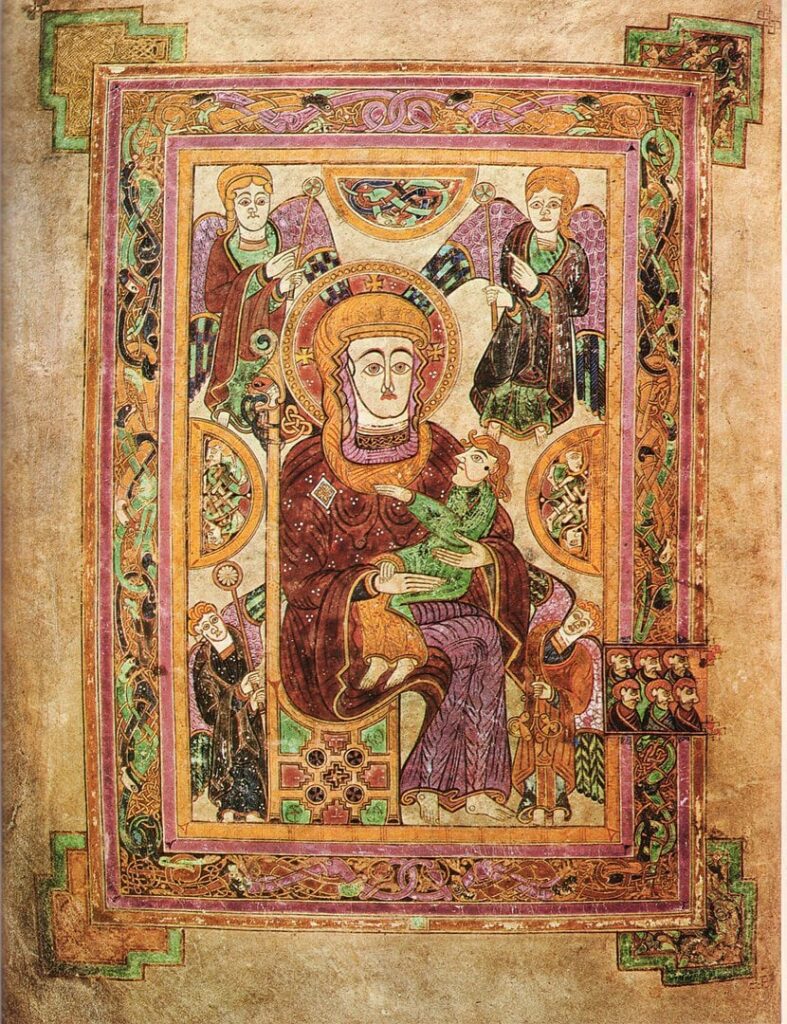
Their art was not only aesthetically pleasing but also carried symbolic meanings. The intricate knots represented eternal life, while the animal motifs symbolized their connection with nature and the spirit world. Celtic art has left a lasting impact on artistic traditions and continues to inspire artists around the world.
Celtic Cross
One of the many Celtic symbols and the most popular of Celtic tattoos the Celtic Cross. Debated by historians who believe that the Celtic Cross predates Christianity by thousands of years a Celtic Cross is one of the most popular symbols of Ireland for a tattoo. It represents eternal love, and, for some, it brings good luck and protection.
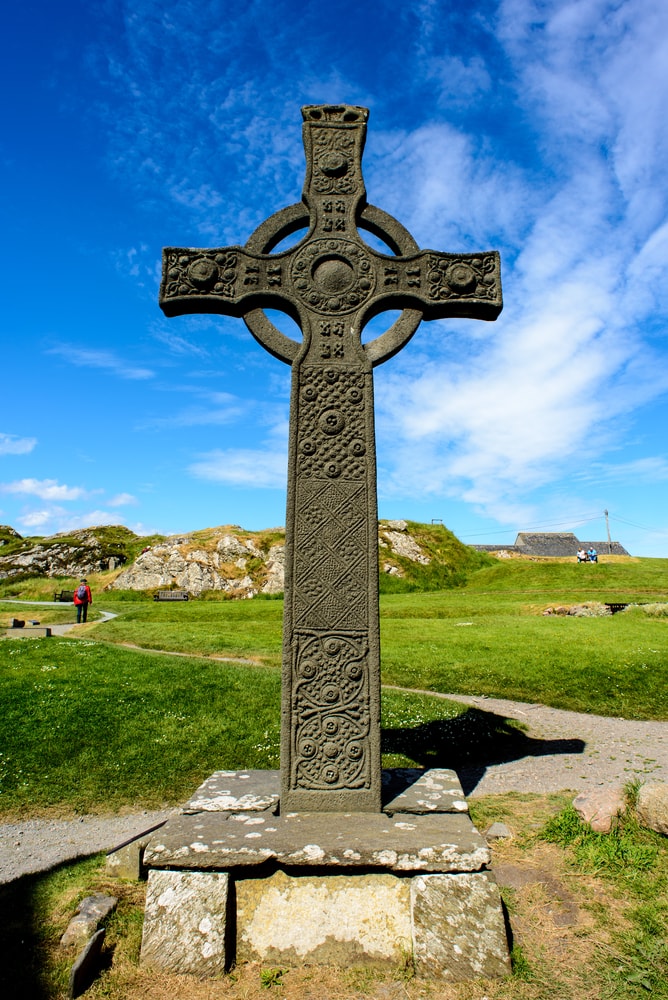
Irish Harp
The national emblem of Ireland, the famous celtic symbol of the Irish Harp is another widely recognised celtic symbol. Even Guinness uses it as their logo and it can be found on our Irish coins. The harp is an important symbol in Ireland as it personifies the spirit of the people. In the 16th century, the Brits were so threatened by the use of this symbol that they ordered all harpists where to be executed and the harp burnt. The harp is also a widespread symbol in Irish culture and a symbol of Irish identity.
The most famous of Irish harps can be seen in Trinity College with the Book of Kells. Known as the ‘Brian Boru harp’, it actually dates from the fourteenth or fifteenth century.
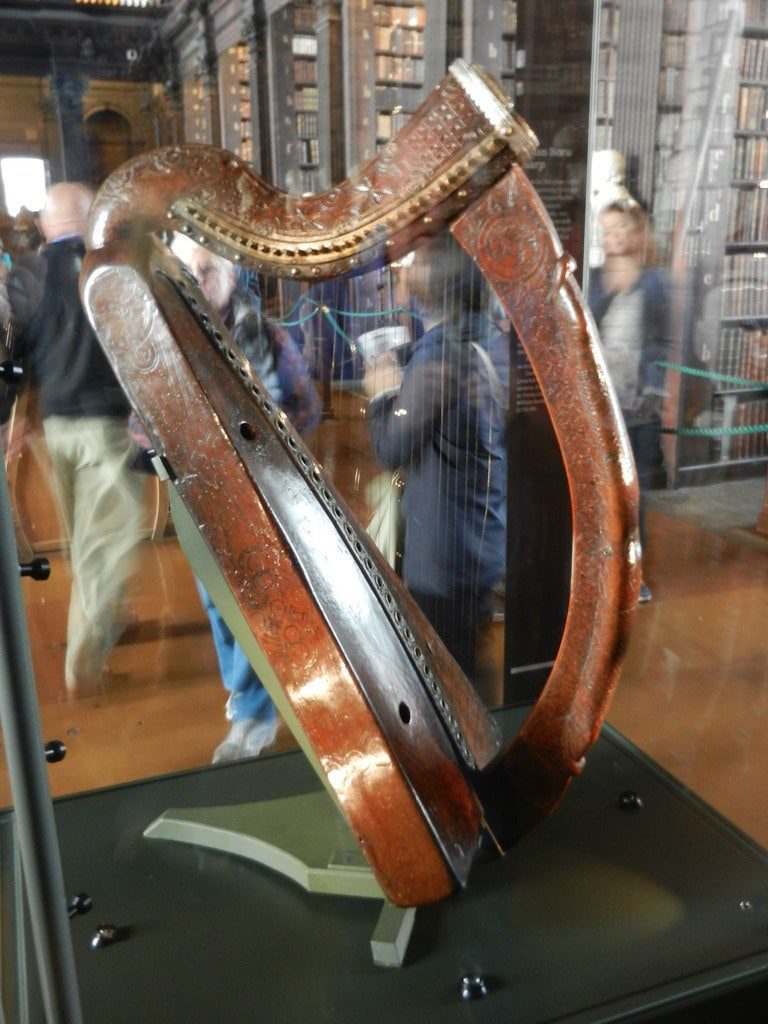
The Dara Celtic Knot
The most sacred tree in the Celtic universe was the Oak and Dara comes from the Irish word “doire” which means oak tree and was a powerful symbol of strength in the Druid culture. The Druids and the Celts believed that trees were connected to the spirit world and were an entryway into the lands of other spirits. The Dara Knot is a fascinating symbol of ancient Irish culture and the old ways.
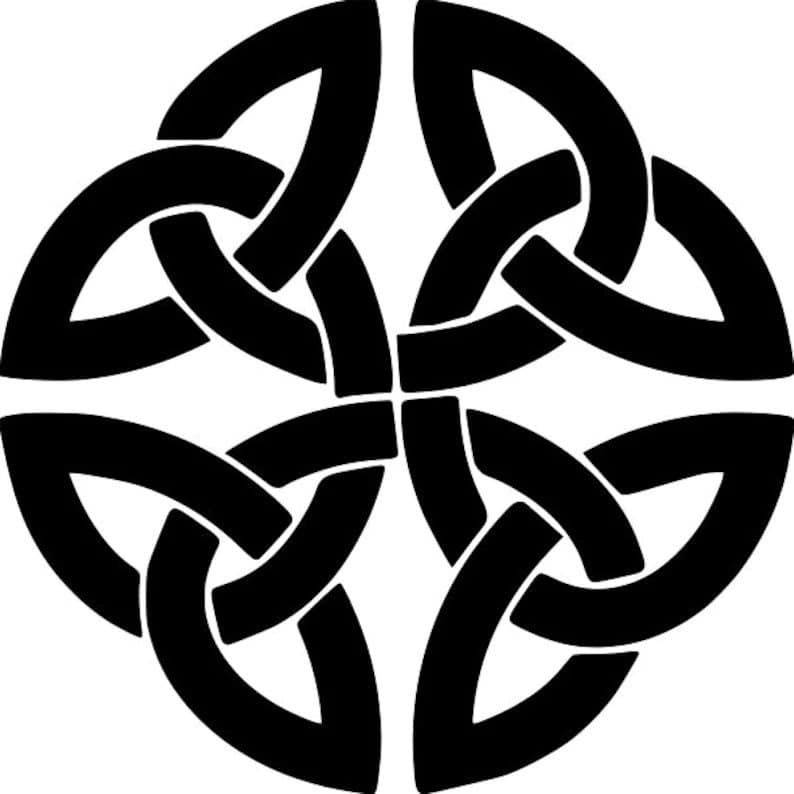
The Ailm
The Ailm is the Celtic symbol for inner strength and is represented by a fir tree. In Celtic legends, the evergreen fir tree was associated with the soul. The actual Celtic Ailm symbol comes from the first letter of the Ogham alphabet.
The Ailm represents strength, endurance, and resilience as well as healing, purification, health, and fertility.
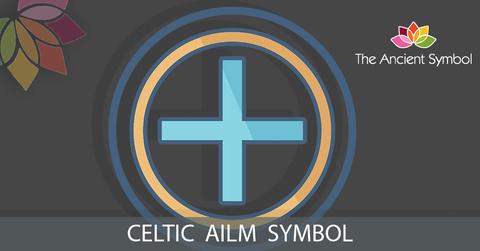
Celtic symbol for love
Created by jewelry makers the Celtic symbol for everlasting love is the Serch Bythol. This symbol combines two triskeles intertwined.
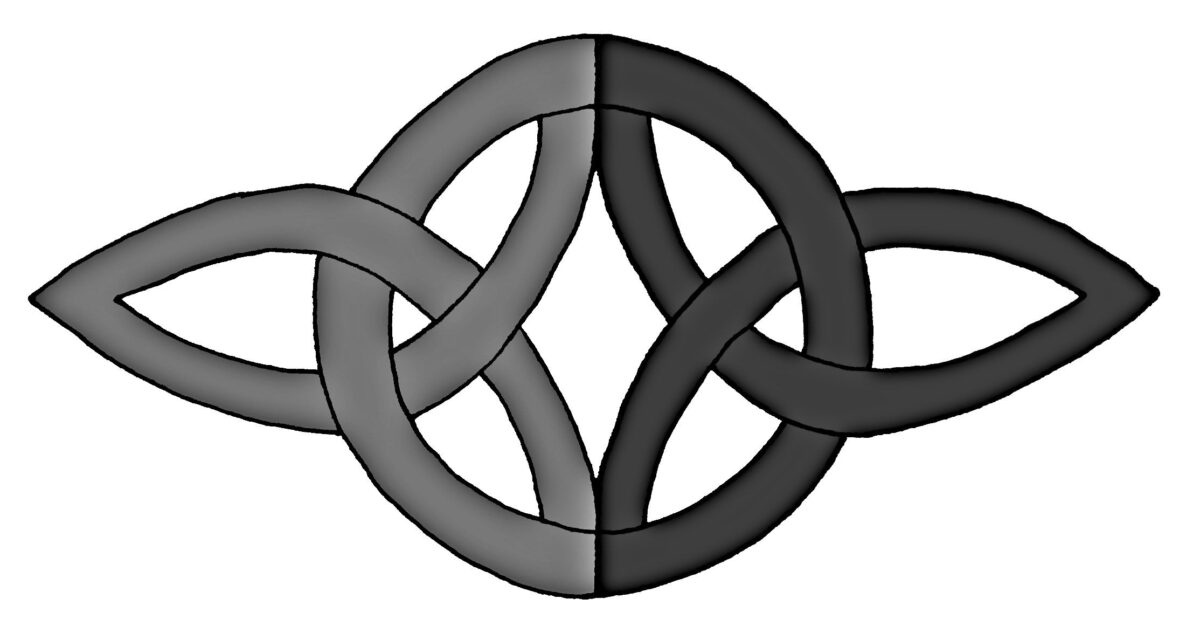
Triskele – Triquetra or Trinity knot symbol
The Celtic Triskelion is an ancient Celtic symbol dating back to the Neolithic era and it can be seen carved into the stones at Newgrange. As one of the oldest Celtic symbols, it reflects many areas of Celtic culture from 500 BC onwards. In Ireland, it is associated with Manannán mac Lir, the Celtic God of the Sea.
Thought to represent many things within Celtic culture including the motion of the universe and its energies, life, death and rebirth, and the Celtic symbol for family; mother, father, child, past, present and future. Some believe it is a Celtic female symbol for maiden, mother, and crone and is a Celtic symbol of female power.
The trinity knot meaning has been interpreted in many ways throughout history. It can represent the three stages of life, from youth to adulthood to old age, or the maiden, mother, and crone. It can also symbolize the Holy Trinity of Father, Son, and Holy Spirit, or the past, present, and future.
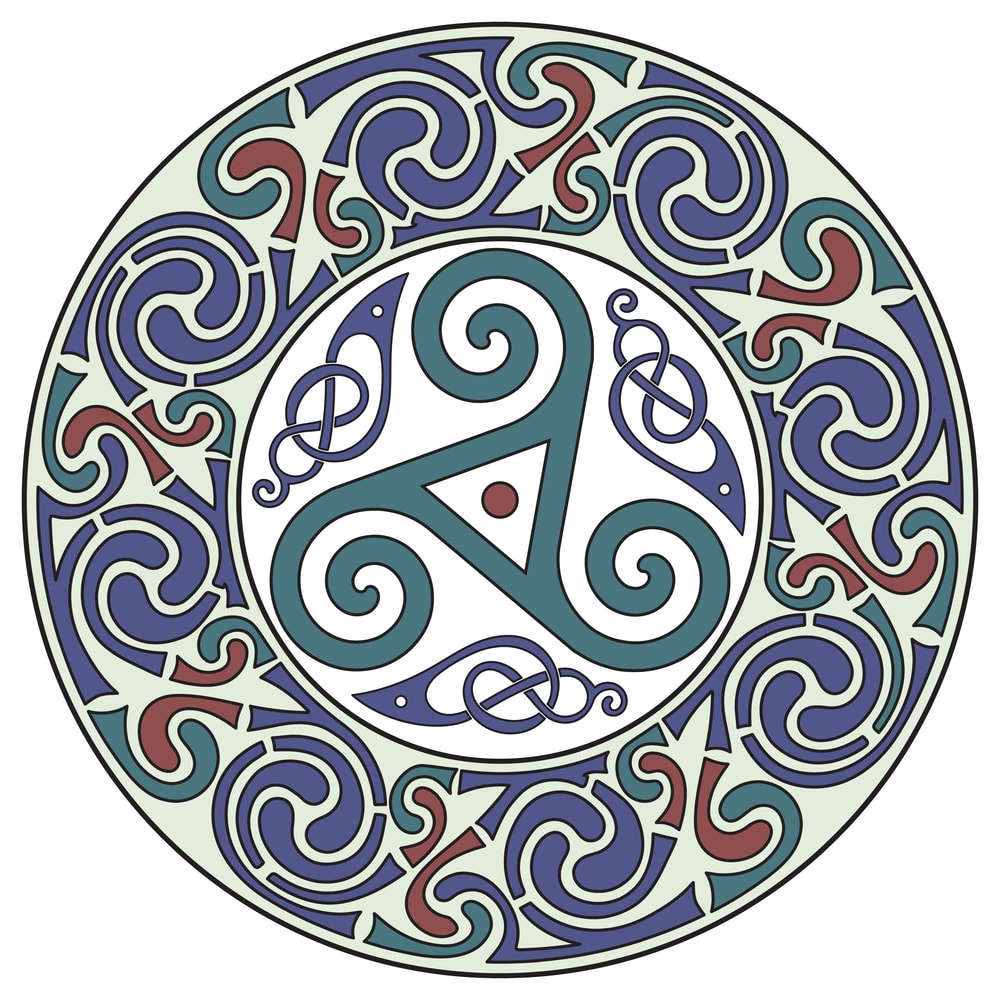
The Shamrock
Probably one of the most traditional Irish tattoos is the national flower of Ireland but many confuse the Shamrock with a 4-leaf clover which is said to be good luck. The shamrock is a variety of clover and it was an important symbol to the Druids because of the three heart-shaped leaves. The Celts believed that everything that is important in the universe comes in three.
The shamrock became a symbol of rebellion against the British crown in the 19th century and anyone caught wearing it was executed.
Here in Ireland, the stories say that St. Patrick used the shamrock to explain the Holy Trinity although this is not found in any of his writings. However, the shamrock became the sign of Ireland’s patron saint and a symbol of good luck and is worn by everyone celebrating St. Patrick’s Day across the country.
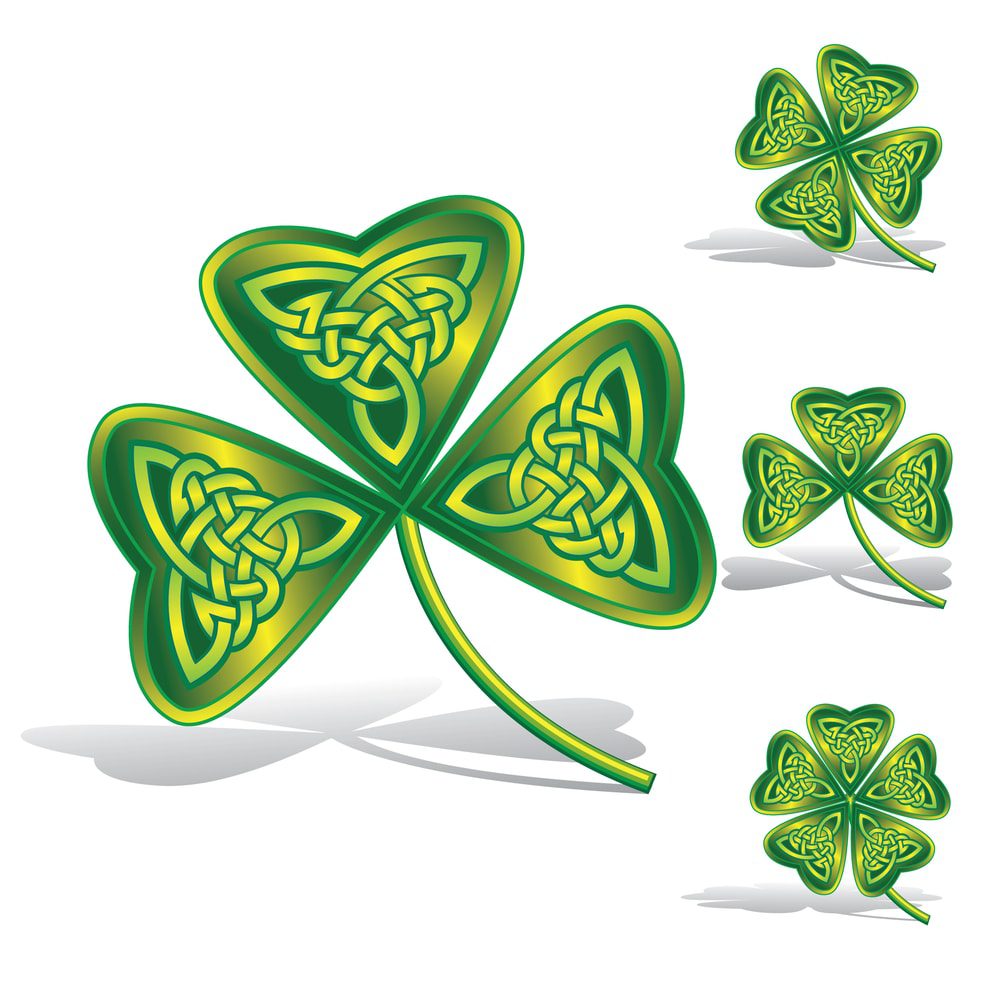
Claddagh
The Claddagh is one of the celtic symbols that doesn’t date back to pagan times but it nevertheless is a popular celtic tradition. The Claddagh is a multi-faceted symbol of friendship (the hands), love (the heart), and loyalty (the crown). A Claddagh ring is a traditional Irish ring that represents love, loyalty, and friendship.
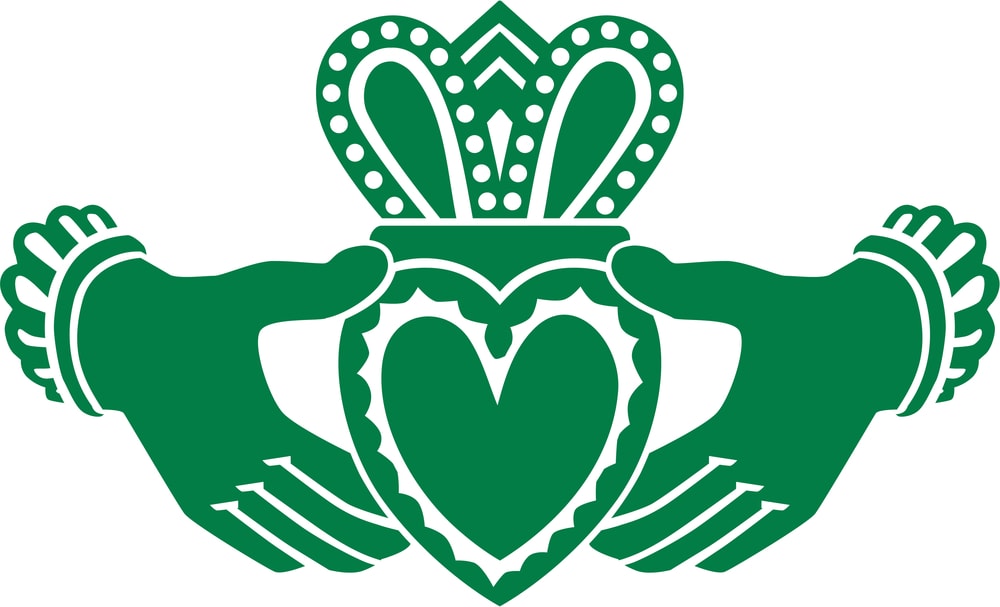
Irish legends tell of a young man who was captured from the Village of Claddagh and sold into slavery. As a slave, he was apprenticed to a goldsmith and during his time there, he fashioned the Claddagh ring for his sweetheart in Ireland. When he returned his sweetheart was still waiting for him and he presented her with the Claddagh ring.
The Claddagh ring, a traditional Irish symbol, holds deep meaning in Celtic belief. To properly wear this ring, there are a few key rules to follow. Firstly, if you’re in a relationship, wear it on your ring finger with the heart pointing towards you, signifying that your heart is taken. If you’re single, wear it on the same finger but with the heart facing outward, indicating your availability.
Additionally, it is suggested to place the ring on your right hand to showcase your Irish heritage and roots. Whether gifted or worn as a personal reminder, the Claddagh ring represents love, loyalty, and friendship in Celtic culture.
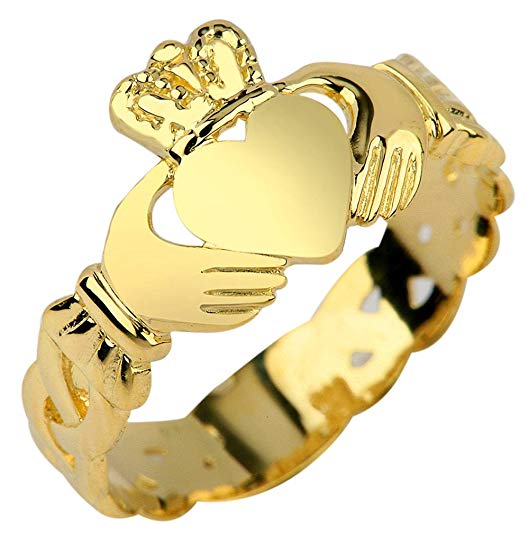
The Irish flag
The Irish Republic officially adopted the tri-colour during the War of Independence with England in 1919. The flag itself is thought to have been a gift to Ireland in 1848 from a group of women in France who were strong supporters of Ireland’s fight for freedom.
Often confused with the Italian flag the tri-colour must be green, white, and orange with the green being at the flagpole end. The three colours represent the Irish and the revolution in green, the white is the hoped-for peace between the Catholics and Protestants and the orange represents the protestants.
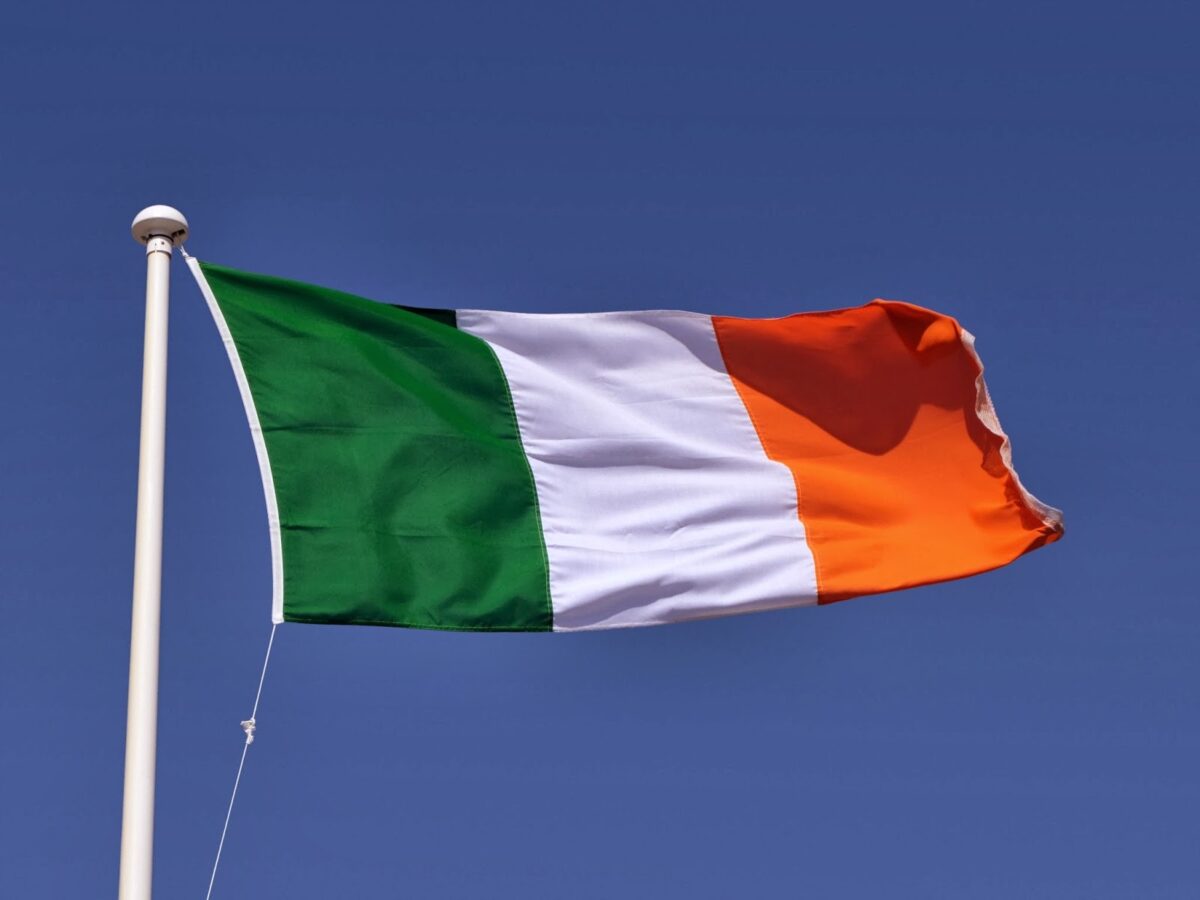
St Brigid’s Cross
One of the oldest Irish symbols is the cross of St. Brigid and these days it is widely believed to be a Christian symbol, Brigid’s Cross is tied to Brigid of the Tuatha de Danaan, which, in Irish Celtic Mythology, is known as a life-giving or fertility goddess. The Celtic Goddess Bríd was regarded as a goddess of healing and she signified the coming of spring and the Feast of Imbolc.
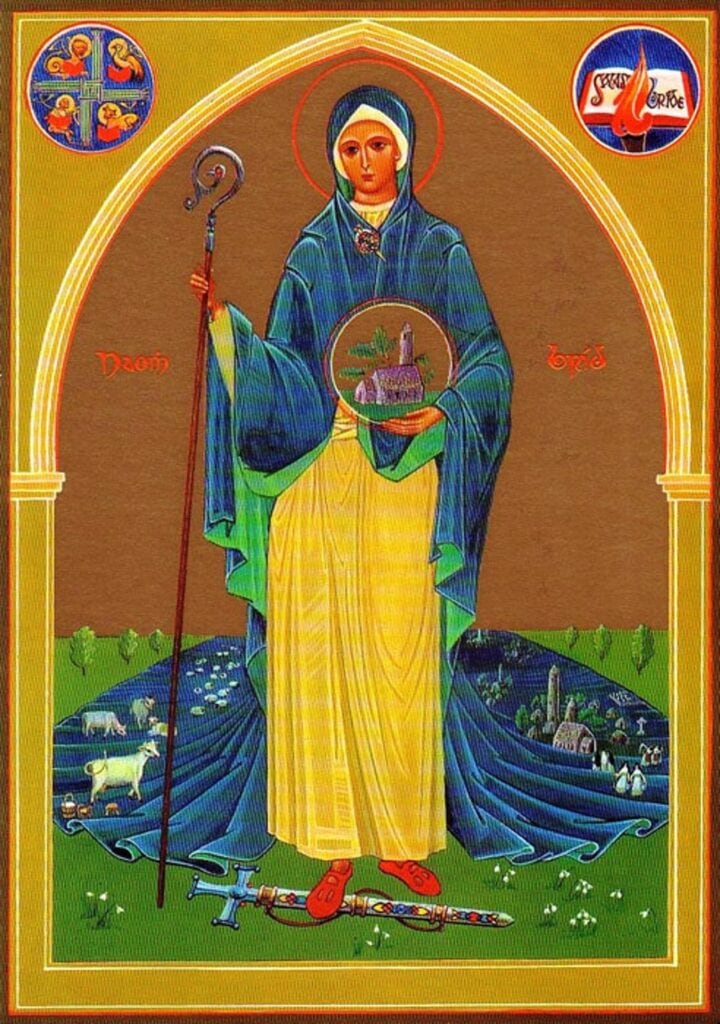
When Christianity moved in it, co-opted Brigid and she became St. Brigid of Kildare. The Goddess Brigid’s powers were transferred to the Christian Saint.
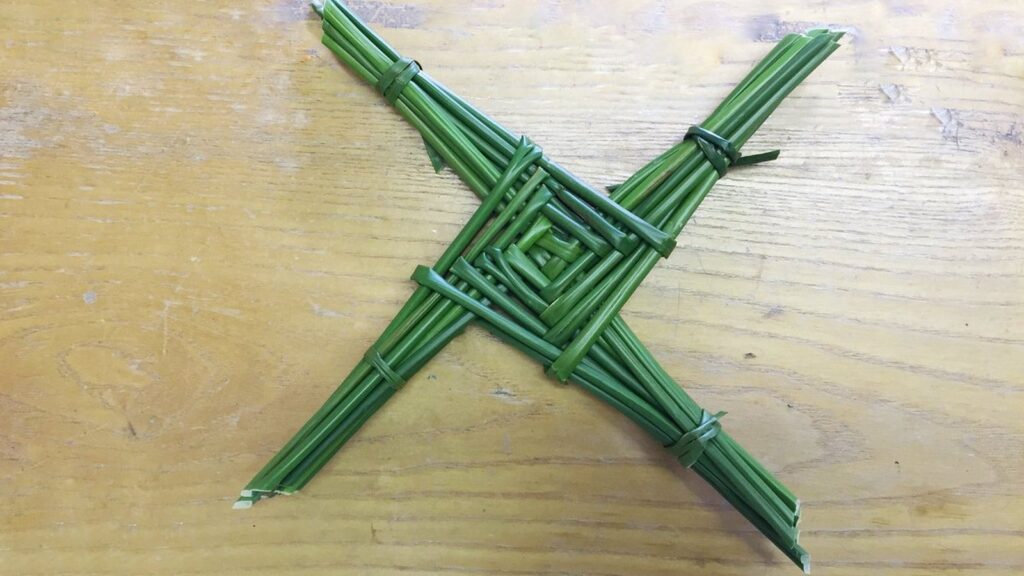
Quaternary Celtic Knot
The Quaternary Celtic Knot, also known as the Four Cornered Knot, holds various significances within the Celtic culture. Numerous Celtic knots exist, each with its own unique interpretation. The quaternary Celtic knot, specifically, represents the essential building blocks of existence. Consequently, it serves as a symbol of equilibrium and concordance, encompassing the four fundamental elements of life – Earth, water, fire, and air.
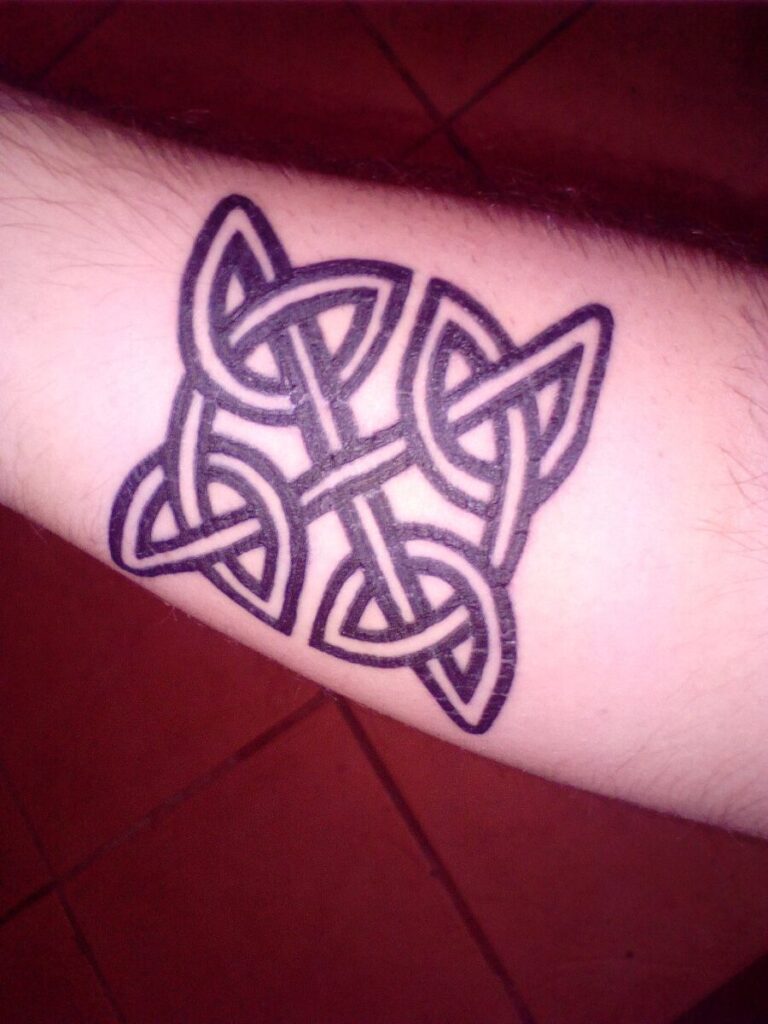
The Green Man
The Green Man can be seen throughout many cultures and he is depicted as a face surrounded and comprised of foliage and leaves. He is also known as the ‘Man in the Tree’, ‘Derg Corra, Viridios,’ and ‘Jack o’ the Green’. The Green man is a Celtic symbol for rebirth and the symbiotic relationship between humans and the natural world.
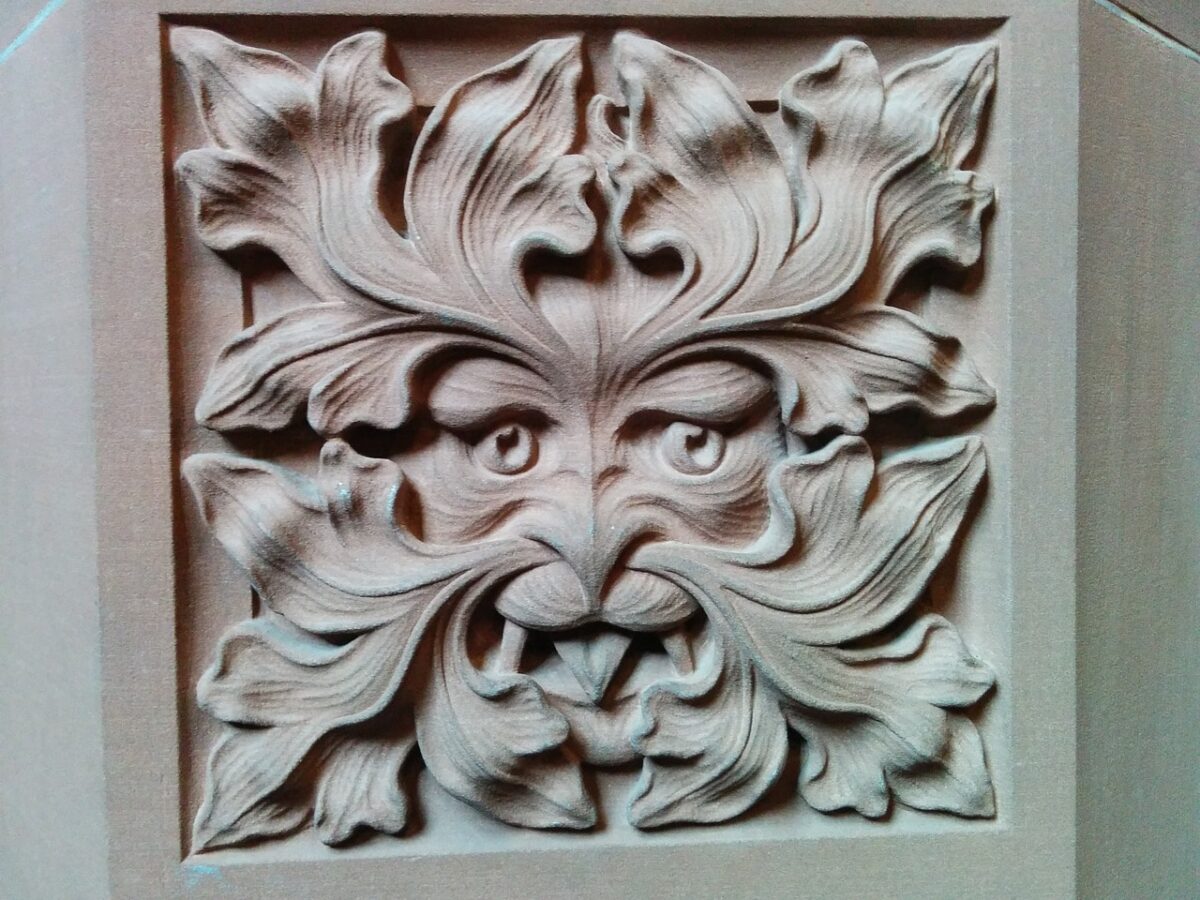
Leprechauns
To many people, the Leprechaun is a favourite Irish image, connected to the enduring legends of capturing a Leprechaun and finding his pot of gold. The Leprechaun is a kind of fairy who takes the form of an old man wearing a green coat and he is linked to the Tuatha De Danann of Irish mythology.
There are many versions of Leprechaun tattoos and quite often, some use the Fighting Irish motif of Notre Dame University’s football team.
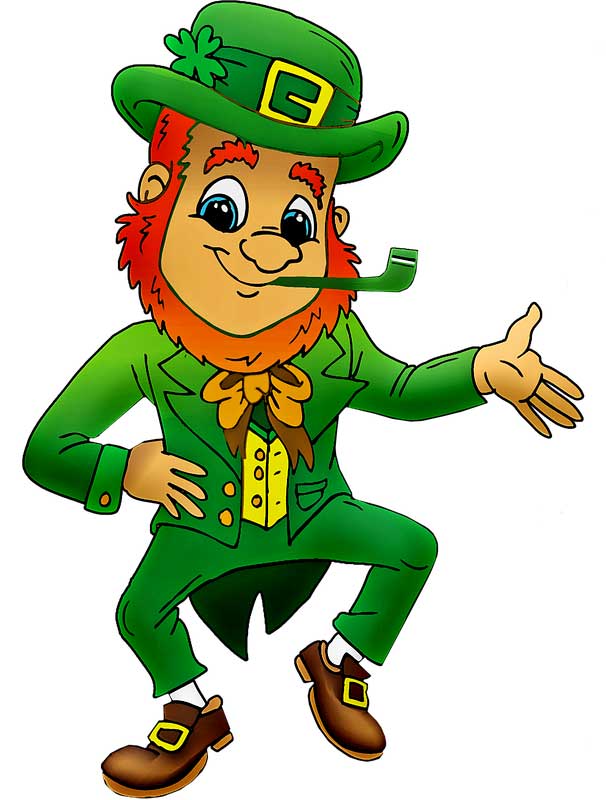
Celtic Motherhood Knot
Celtic Mother’s Knot is depicted as intertwined Celtic hearts that represent a mother’s embrace and the bond between mother and child. It is said that you add dots to the symbol to represent each child; these can be added within the knot work. This symbol is often referred to as the Mother and Daughter Celtic symbol.

The Celtic Tree of Life symbol – Crann Bethadh
The tree of life symbolizes the connection between heaven and earth and it is usually represented with intertwining branches and roots within a circle of Celtic knot work. The Celtic name for the oak tree is Daur, which is pretty obviously referring to Door, and it was the door to the underworld or Fairy realm. This is a very popular ancient Irish tattoo.
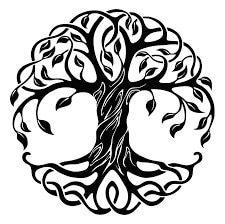
Did the ancient Irish have tattoos?
The Celts used tattoos in various ways. They signified rites of passage as in moving from youth to adulthood, battle successes, and great deeds. Permanent tattoos were restricted to certain segments of Celtic society the Celts also used temporary tattoos and body paint from the blue woad plant as ritual decoration before going into battle or taking part in certain rituals. For many getting a celtic knot tattoo or a Celtic sign may enhance the connection to their Celtic heritage.
Tips for Irish Translation for tattoos
Gaelic or Irish is still spoken, but it is referred to here as simply Irish or “Gaeilge” as Gaelic usually means Scottish Gaelic. Irish is taught in all schools in the Republic and it is mandatory in many professions to obtain a degree. Traditional Irish speakers in the areas known as the Gaeltacht speak Irish throughout their school and personal lives. There is compulsory learning of Irish in primary schools in Ireland.

The Gaeltacht is mainly found on the Wild Atlantic Way in places like Donegal.
These days more people in urban areas are learning Irish and classes are becoming more and more popular in all areas of the country.
Most of the “translators” you will find online will not translate your sentence of phrase into adequate Irish so here are some tips for getting a translation.
10 Irish Translation Tips
1) Don’t use Google translate it is often so wrong
2) Use an accredited Irish translator for the most reliable translation
2) Ask for a rate for the translation job
5) Explain why you want the Irish translation
6) I also recommend checking with the Irish speakers in Facebook groups, many a bad tattoo has been stopped this way.
The Irish Gaelic Alphabet
When travelling in Ireland you will note as you drive that the road signs and street signs are in both English and Irish, making it an easier drive. Traditionally the Irish alphabet is an adaption of Latin.
The Irish alphabet consists of 18 letters one of the best places to obtain an Irish font to be used in your tattoo is at Gaelchlo’s website.
Today people write and type Irish Gaelic with the standard Latin alphabet. The Irish alphabet uses 24 of the 26 letters of the English alphabet, as opposed to the original number of 18.
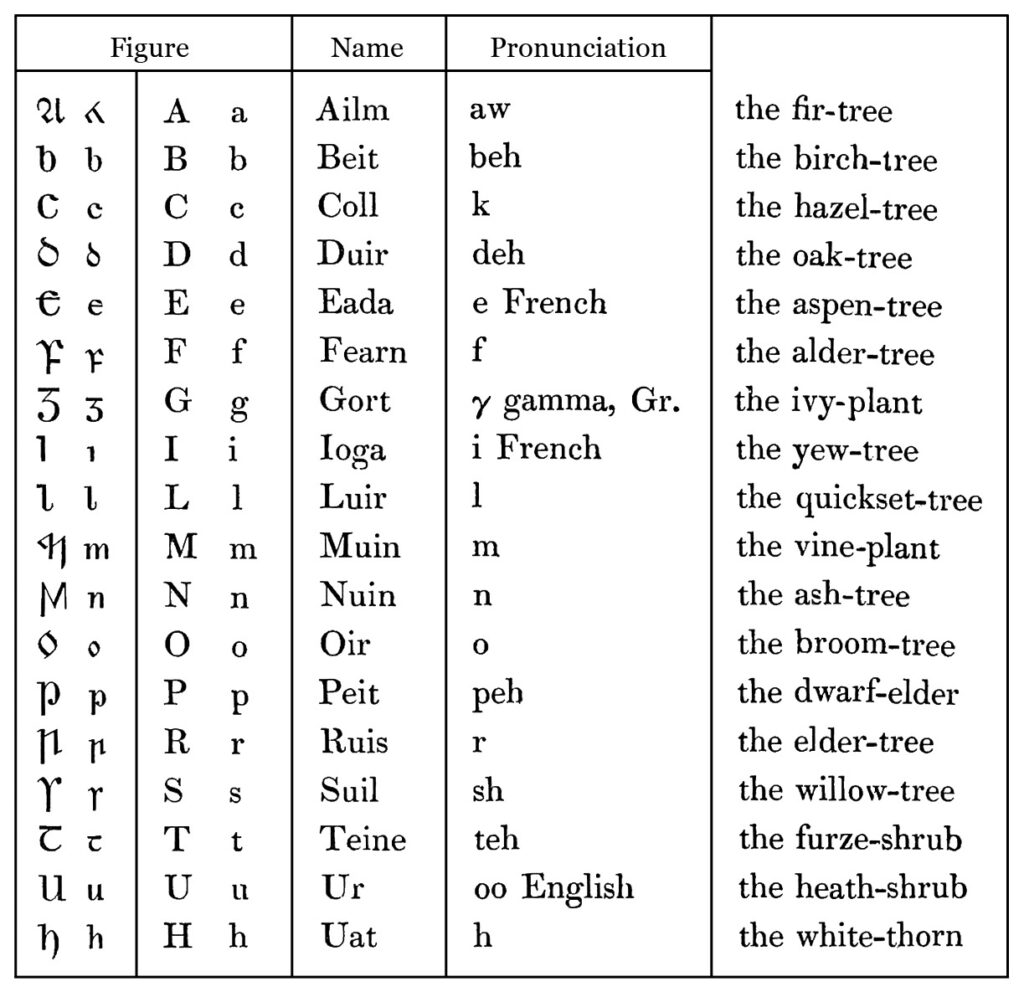
Ogham Alphabet
The Ogham alphabet is the earliest written Gaelic alphabet and is somewhat akin to Viking runes. Using the Ogham alphabet is one way of getting ancient Celtic tattoos.
The Ogham alphabet is a system that uses lines to denote letters. Often used carved into stones which can be found in places such as the National Museum in Kildare St in Dublin but also many examples around still standing at or close to the location where they were first placed over 2000 years ago. There is a group of Ogham stones at Dunloe, and more can be found in Meath, Kilkenny and Waterford.
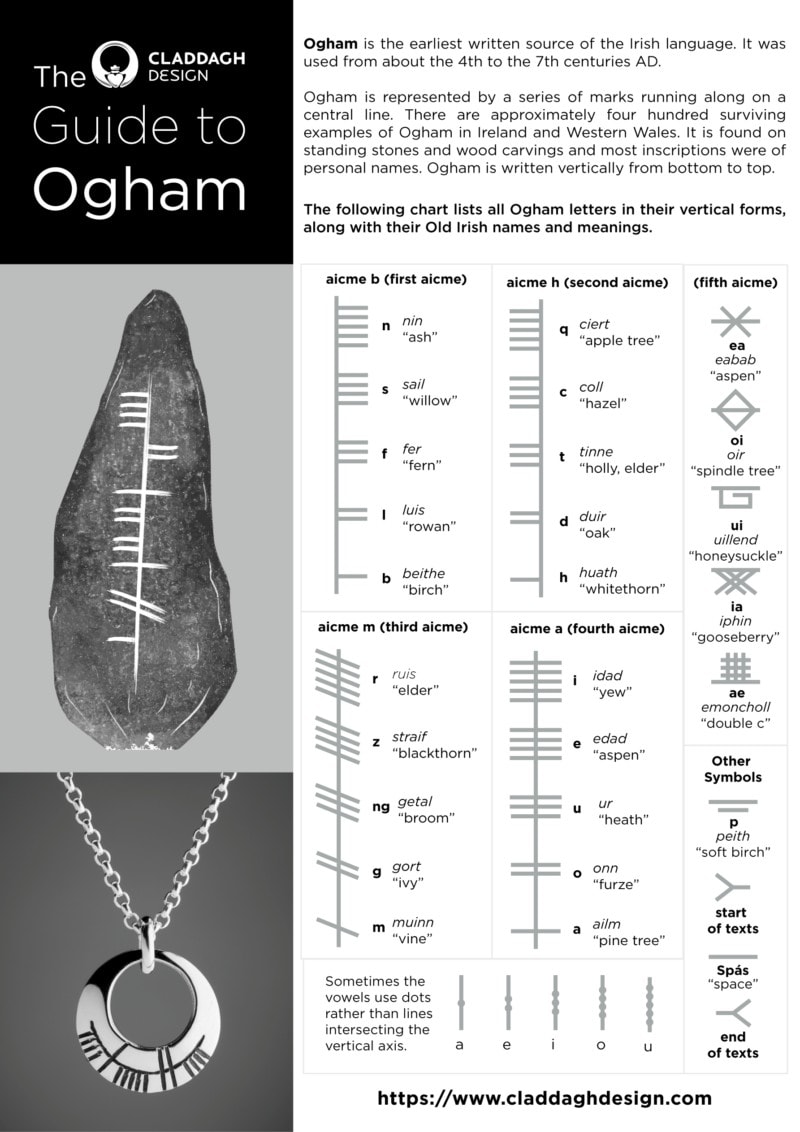
Ancient Celtic Symbols and meanings for Getting a Tattoo in Ireland
While there is no legal minimum, the age for getting a tattoo in Ireland many shops will refuse to tattoo you under that age unless you have parental permission and bring your parent or guardian along with you to the appointment.
What are the best tattoo studios in Ireland?
That’s a much tougher question because it really depends on what kind of Irish tattoo you are looking for. If you want some Irish ink such as Celtic knotwork, an Irish Celtic symbol or a saying translated into Irish Gaelic that’s an easy task.
Don’t forget most folks who work in Tattoo shops are artists, they are looking to put their art on your body, and those tattoos are a different class than getting a small Irish shamrock tattooed as a symbol of your trip to Ireland. Probably the best place to find tattoo artists across Ireland will come from College and Uni students and those publications that speak to them. The College Times is one such magazine that often talks about some of Ireland’s well-known Tattoo Artists.
You should take care with any symbol you are going to permanently tattoo on your body this will be with you for a lifetime so it needs some thought and consideration before you get anything inked on yourself.
Do your homework and research what you want and what it means, make sure that you can live with this for the rest of your life and then go find an artist to ink your body.
Frequently asked Questions about Celtic symbols and meanings
Q: What are Celtic symbols and meanings?
A: Celtic symbols are intricate and beautiful designs that were created by the ancient Celts. These symbols have deep meanings and are often associated with Celtic culture, beliefs, and mythology.
Q: What is the Dara Knot?
A: The Dara Knot is a Celtic symbol that represents strength and endurance. It is often depicted as a four-pointed knot with intricate designs.
Q: What is the Irish Celtic symbol?
A: The Irish Celtic symbol is a generic term used to describe various symbols that are associated with Irish culture and heritage. These symbols often have deep meanings and are considered important in Irish traditions.
Q: What is the Celtic Spiral?
A: The Celtic Spiral is a symbol that represents the eternal cycle of life, death, and rebirth. It is often depicted as a spiral shape with intricate and flowing lines.
Q: What is the significance of Celtic culture?
A: Celtic culture refers to the culture and traditions of the Celtic people, who were ancient tribes inhabiting parts of Europe. It includes their language, music, art, mythology, and spiritual beliefs.
Q: What is an ancient Celtic symbol?
A: An ancient Celtic symbol refers to the symbols that were used by the ancient Celts during the Celtic period. These symbols often have deep meanings and were important in their daily lives.
Q: What is a pagan symbol?
A: A pagan symbol is a symbol that is associated with polytheistic religions or spiritual beliefs that predate Christianity. It is often used to represent nature, fertility, and the elements.
Q: What is the ancient Celtic symbol for strength?
A: The ancient Celtic symbol for strength is often depicted as the Dara Knot or the Celtic Knot. These symbols represent inner strength, resilience, and endurance.
Q: What is an Irish symbol?
A: An Irish symbol refers to any symbol that is associated with Irish culture, heritage, and history. It can include symbols such as the Celtic Cross, the Claddagh Ring, or the Shamrock.
Q: What is the significance of Irish people and their culture?
A: Irish people have a rich and vibrant culture that is deeply rooted in history, traditions, and folklore. Their culture is known for its music, dance, literature, and unique symbols that represent their identity.
You might also like
The Celtic Cross – an iconic symbol of Ireland
Ancient Ireland 30 sacred places
Pin it to save it

